World of Words: What Do Blind People Use to Read
The love for reading stands as a common thread that transcends all barriers. For individuals with visual impairments, the joy of immersing oneself in a good book is a profound source of enrichment. In this article, we’re going to answer the question “Can blind people read?” and “How can a blind person read?”. Delving into the world of accessible formats, innovative technologies, and supportive communities, we uncover how reading remains a fulfilling hobby for the blind.
Reading aids for the visually impaired
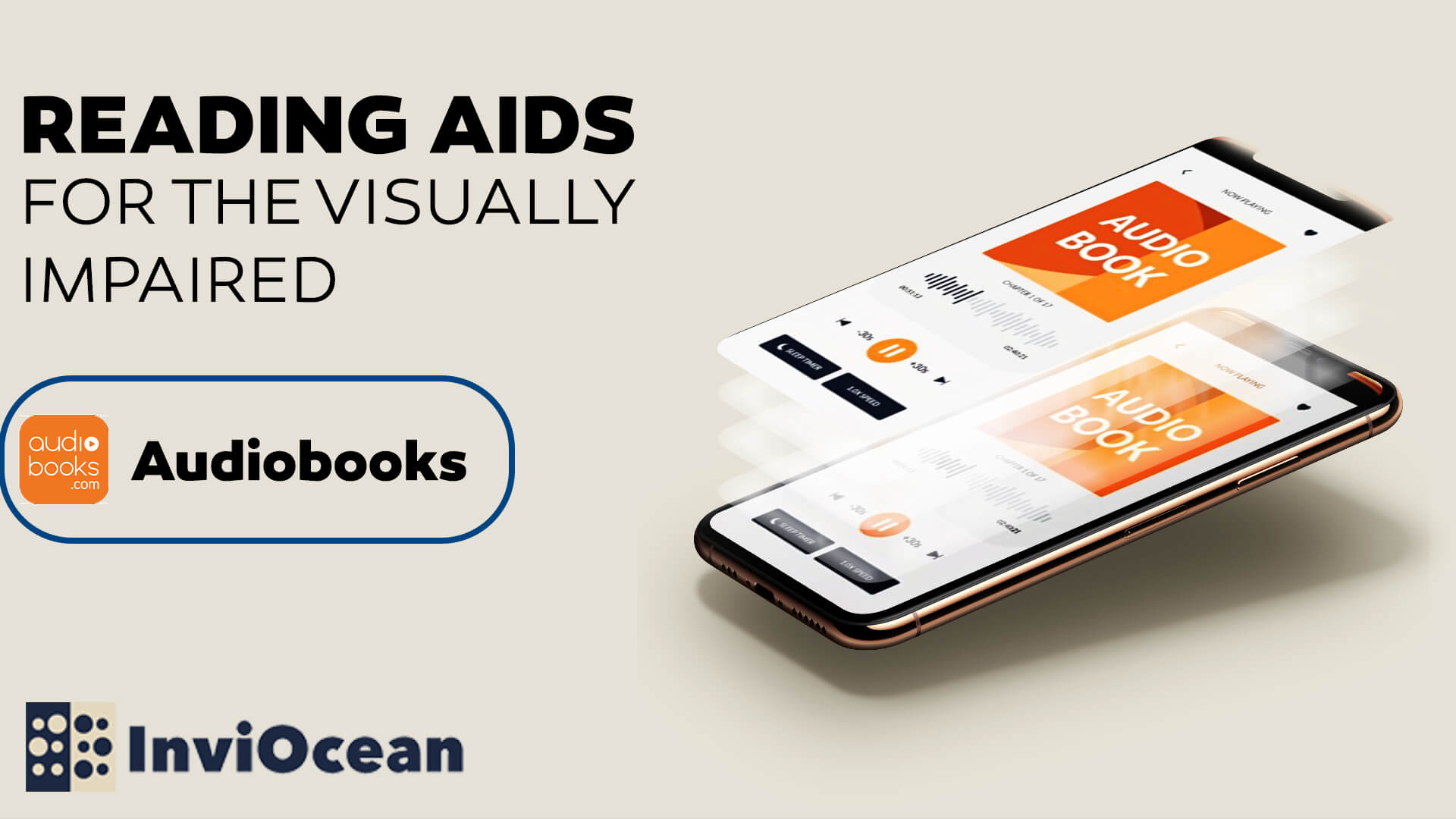
Audiobooks
How do blind people read? Blind individuals read using various adaptive technologies, such as audiobooks. Audiobooks are audio recordings of spoken words that represent the content of a book. Instead of reading the text, listeners can hear the narration, allowing them to experience the content of a book through sound. Audiobooks can be produced with professional narrators, voice actors, or even by the authors themselves. They provide an alternative way for people to consume books, making literature more accessible to those who prefer or require an auditory format. Audiobooks are available in various genres and are often used by individuals while commuting, exercising, or engaging in other activities where reading a physical book may not be practical.
Blind people use audiobooks as a primary means of accessing written content. Since they cannot read printed text visually, audiobooks offer a vital alternative. Blind individuals typically listen to audiobooks using specialized devices such as digital audio players, smartphones, or computers equipped with screen readers. Screen readers are software programs that convert digital text into speech or braille output, enabling blind users to navigate through audiobook libraries, select titles, and listen to the content. Audiobooks allow blind people to enjoy literature, stay informed, and access educational materials in a format that accommodates their visual impairment.
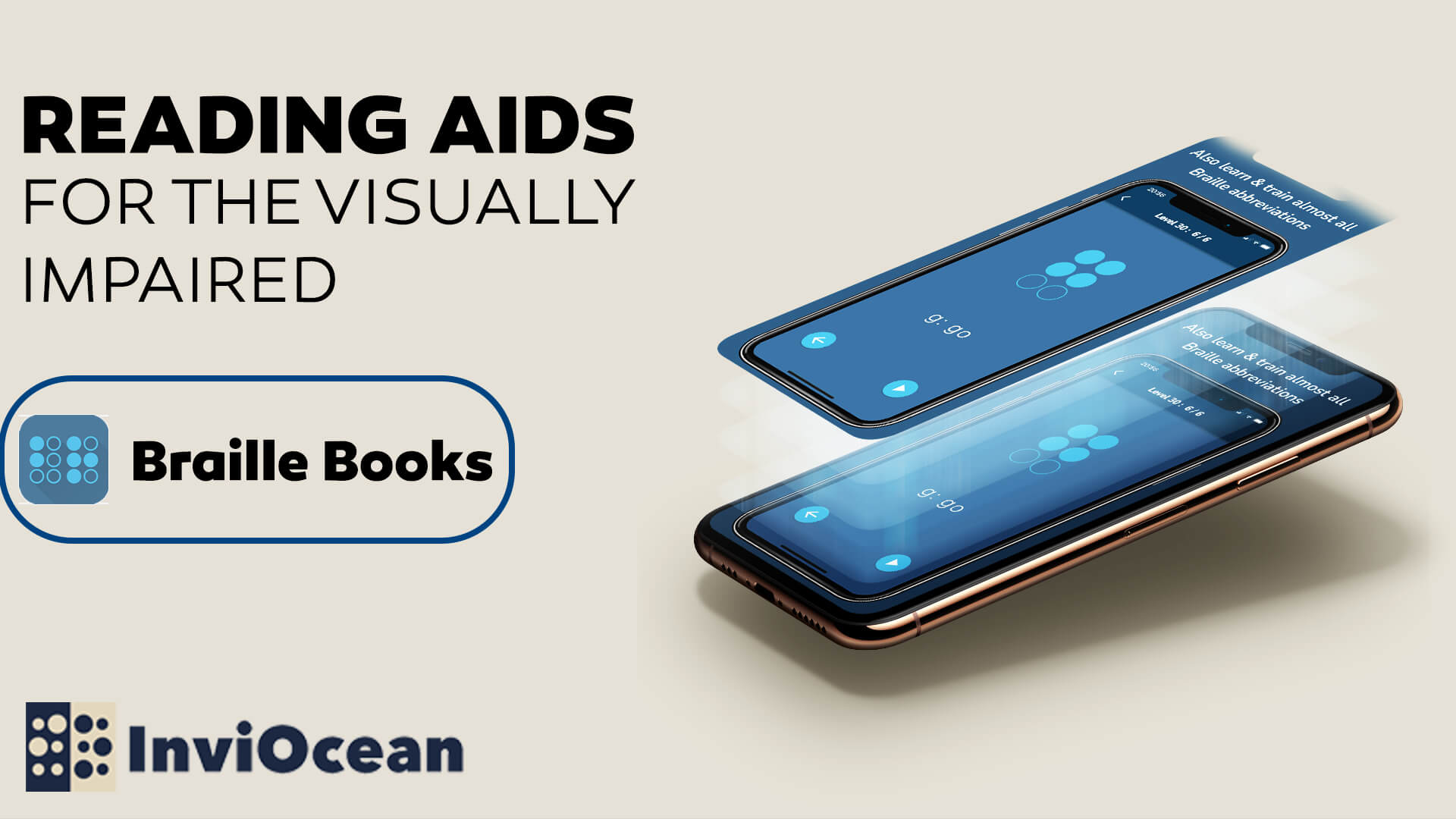
Braille books
What do blind people read? Braille books are essential tools for people who are blind or visually impaired, enabling them to access written information through touch rather than sight. These books are embossed with raised dots in patterns that represent letters, numbers, and punctuation marks in the Braille alphabet.
To read a Braille book, individuals run their fingertips over the raised dots, feeling the patterns and characters that form words and sentences. Each character in Braille consists of one to six dots arranged in a rectangular grid of two columns and three rows.
To help navigate the text, Braille books often include page numbers, chapter headings, and other indicators in Braille format. Readers can use their fingertips to locate specific sections and move through the book sequentially.
Braille books cover a wide range of subjects, including literature, textbooks, cookbooks, and more. They are produced using specialized equipment, such as Braille printers or embossers, which emboss the dots onto paper or plastic sheets.
People who use Braille books typically receive training in reading and writing Braille, which enables them to develop proficiency in navigating and comprehending the text. Braille literacy is a crucial skill that empowers individuals with visual impairments to access information, pursue education, and engage with the world around them independently.
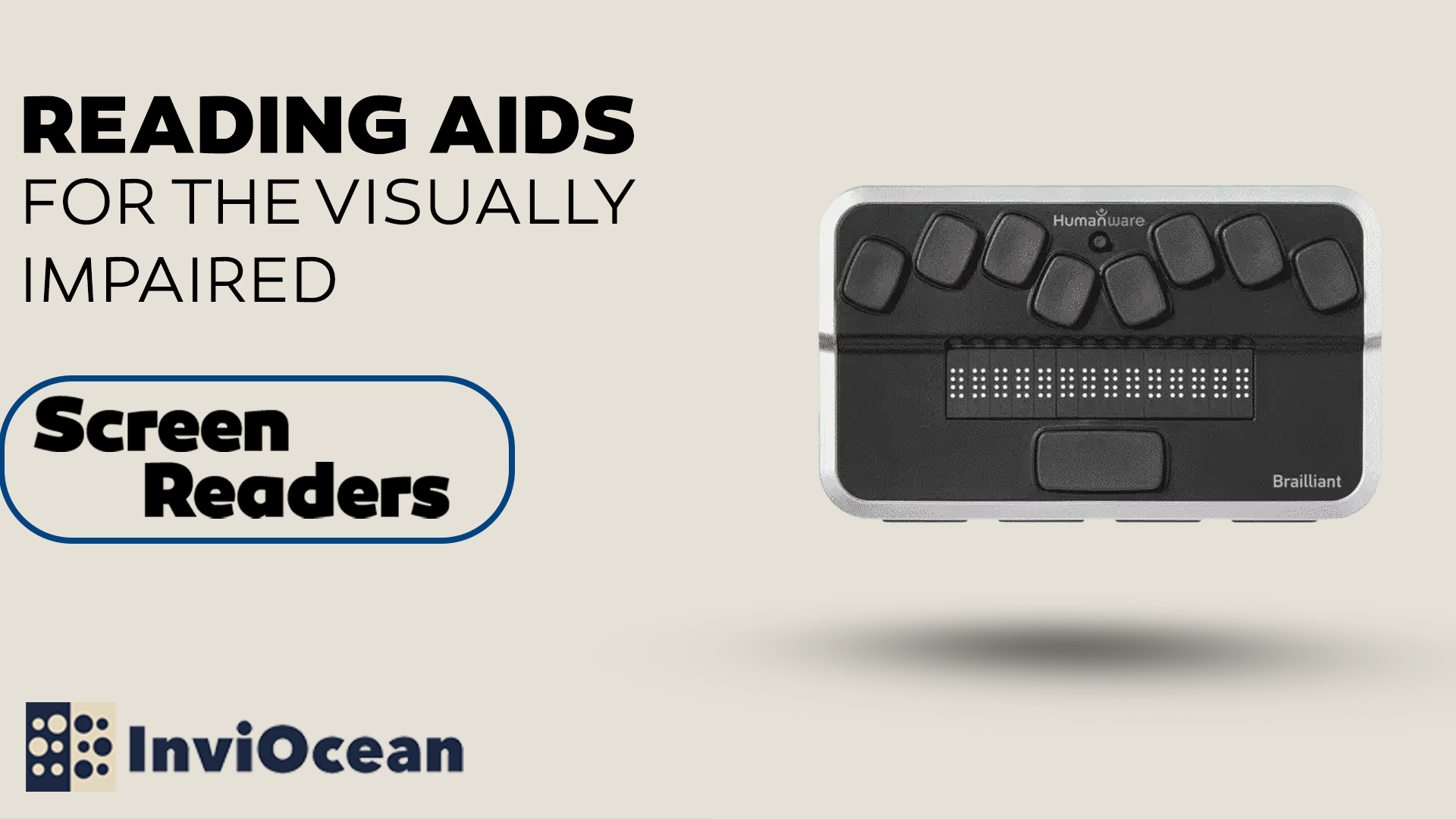
Screen readers
Reading for the visually impaired is easy with screen readers. Screen readers serve as essential software programs designed for blind or visually impaired users, facilitating the reading of on-screen text through a speech synthesizer or braille display. Acting as the intermediary between the computer’s operating system, applications, and the user, a screen reader allows individuals to send commands by pressing specific key combinations on the keyboard or braille display.
Commands issued to the screen reader can include tasks such as reading or spelling a word, reading a line or full screen of text, locating specific text on the screen, announcing the cursor’s position, and more. Advanced functions, like identifying text displayed in a certain color, reading highlighted text, or determining the active choice in a menu, are also supported. Screen readers are versatile tools that cater to various needs, including spell checking in word processors or reading spreadsheet cells.
These software programs are compatible with personal computers running Linux, Windows, Mac, iOS, Android, and more. Each screen reader comes with its unique command structure and supports various speech synthesizers. Prices for screen readers vary, ranging from free options to more advanced versions priced at $1,200. Discover our compilation of best screen readers
Primarily used by individuals with little to no useful vision, screen readers are especially beneficial for those who may have some residual vision useful for mobility but not for reading text on a screen. Emphasizing the importance of learning to listen to speech output, screen readers offer a more productive alternative than straining to read text up close to a computer screen.

Podcasts
Podcasts share similarities with audiobooks but are typically shorter and cover a wide range of topics, including news, interviews, research updates, personal stories, fiction, and more. Personally, I’ve intermittently used podcasts for staying informed about news and ongoing research for several years. The podcast landscape has expanded significantly in recent times, offering content that caters to diverse interests.
Podcasts serve as an excellent resource for staying updated on current events, listening to uplifting or inspirational stories, and enhancing your knowledge during daily routines or commutes. There are numerous podcast platforms available, and my preferred one is Google Podcasts. However, podcasts can also be accessed through platforms like Google Play Music, Spotify, Apple Podcasts, Pocket Casts, TuneIn Radio, and many others, providing a wealth of content for listeners with various interests.
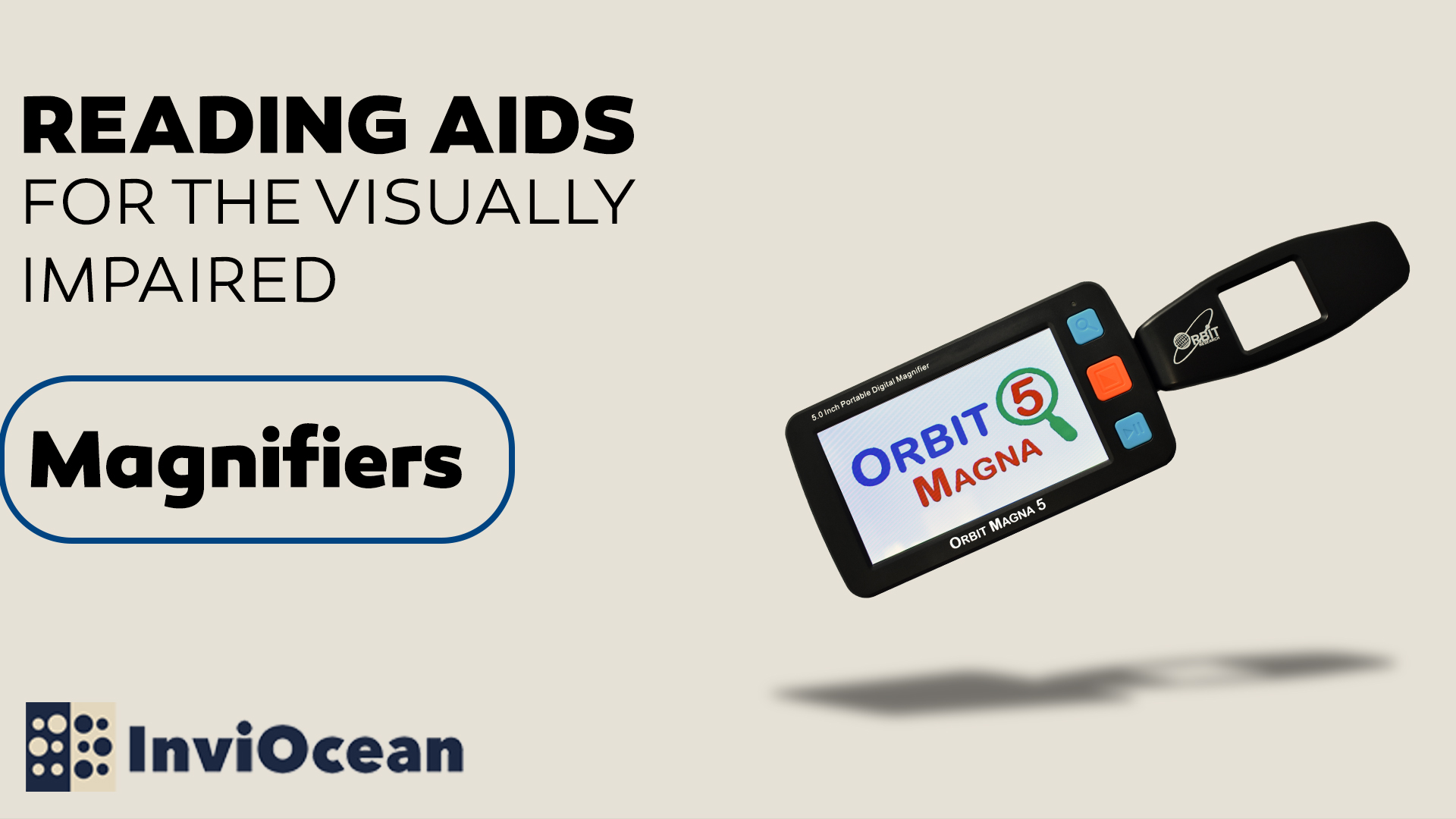
Magnifiers
What do blind people use to read paper books?
Digital Magnifier: A digital magnifier, equipped with a camera and a screen, offers the ability to enlarge text and adjust colors for easier reading. These devices vary in size; they can be handheld for portability or larger with a camera mounted on a stand and a full-size monitor for more extensive reading or studying in a fixed location. Another option includes a magnifier that connects to a computer, utilizing the computer’s monitor. This type of digital magnifier offers portability and a larger screen compared to handheld options, making it compatible with laptops for on-the-go use.
Magnifier (Non-digital): Non-digital magnifiers come in diverse shapes, sizes, and styles to cater to different preferences. There are globe magnifiers resembling snow globes, long narrow line magnifiers for focusing on one line at a time, handheld magnifying glasses with or without attached lights, stand magnifiers with or without lights for hands-free use, and full sheet magnifiers covering a larger area with slightly less magnification power. The variety ensures that you can find a magnifier that suits your specific needs, reading style, and preferred position.
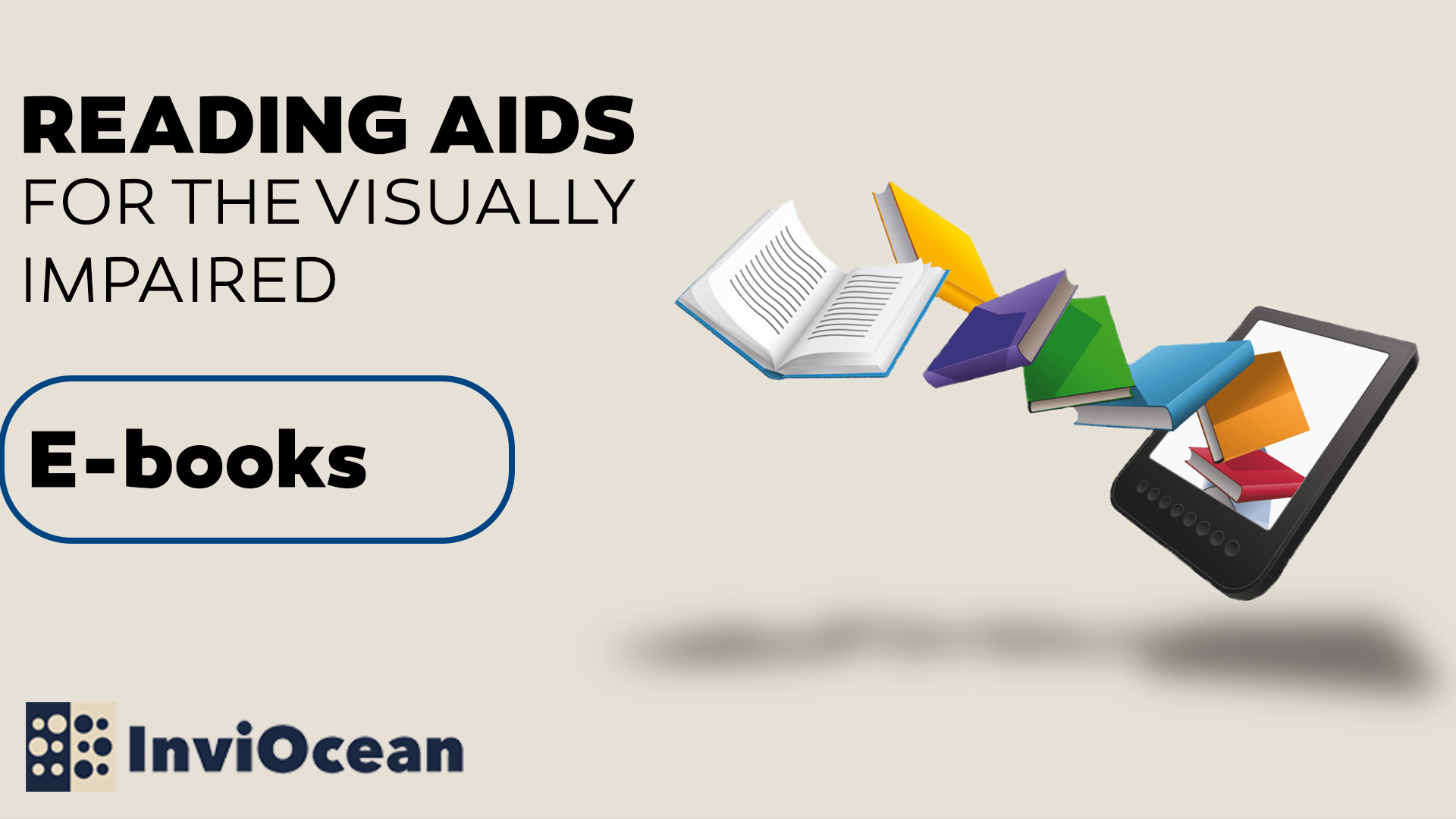
E-books
For individuals who are blind or visually impaired, e-books offer an accessible and convenient way to access literature and other written content. Specialized e-book formats and software, such as ePub3 and DAISY (Digital Accessible Information System), are designed to accommodate screen readers and braille displays, allowing users to access and navigate digital books through audio narration or refreshable braille.
E-books for the blind often incorporate features such as text-to-speech functionality, which reads aloud the content of the book, and adjustable font sizes and styles for enhanced readability. Additionally, navigation features such as bookmarks, headings, and page numbers are implemented to help users easily navigate through the content.
Digital libraries and online platforms dedicated to accessible literature offer a wide range of e-books tailored to the needs of individuals with visual impairments. These e-books cover various genres and subjects, including fiction, non-fiction, educational materials, and academic resources.
In the world of literature, blind individuals find not just a hobby but a transformative journey. With accessible formats like braille books, audiobooks, and innovative technologies such as screen readers, they break barriers and immerse themselves in the magic of storytelling. Every turned page is an invitation to connect, understand, and revel in the shared human experience. For the blind, reading is a timeless source of joy, proving that the love for literature knows no visual boundaries.
Blind and partially sighted individuals employ a light touch as they read from left to right across the page, using one or both hands. The sensitive soft pads of their fingers are utilized to feel raised dots, making them more effective than the fingertips. While most sighted individuals read braille visually, blind individuals rely on touch.
Many blind individuals have developed systems for managing paper currency, such as folding notes in distinct ways, segregating various denominations into separate pockets or sections of a wallet or purse, or, in rare cases, incorporating tactile identification marks on bills of varying denominations.
Screen readers for the blind empower visually impaired individuals to navigate the internet effortlessly. Equipped with a screen reader, users can browse websites, open files, check emails, and read documents. They can also input commands and take action using the keyboard, with each action associated with a unique keyboard combination.
